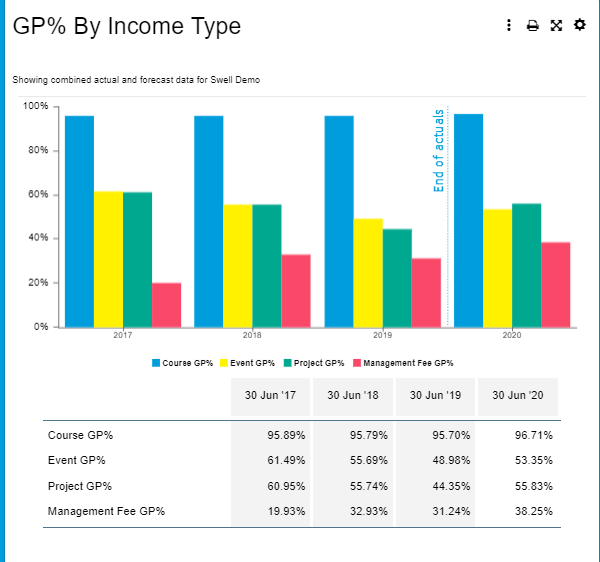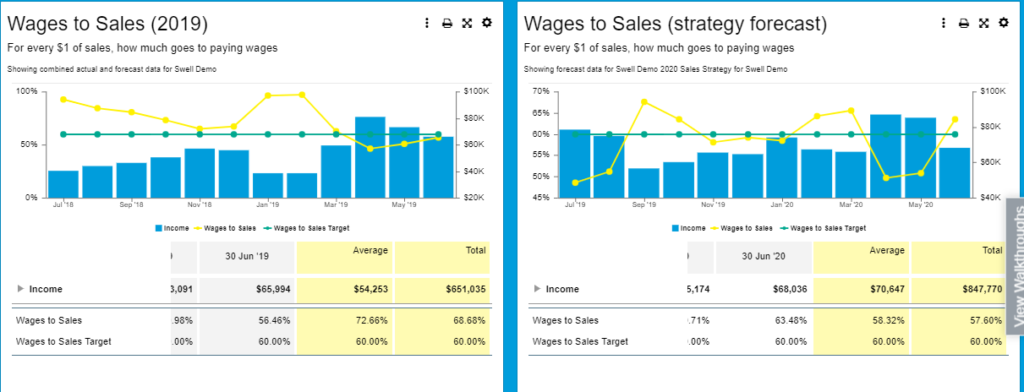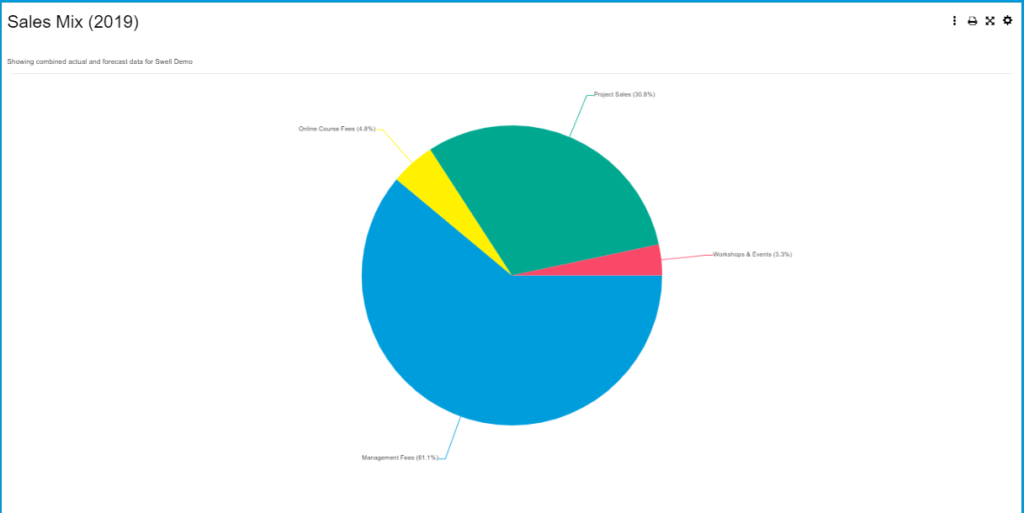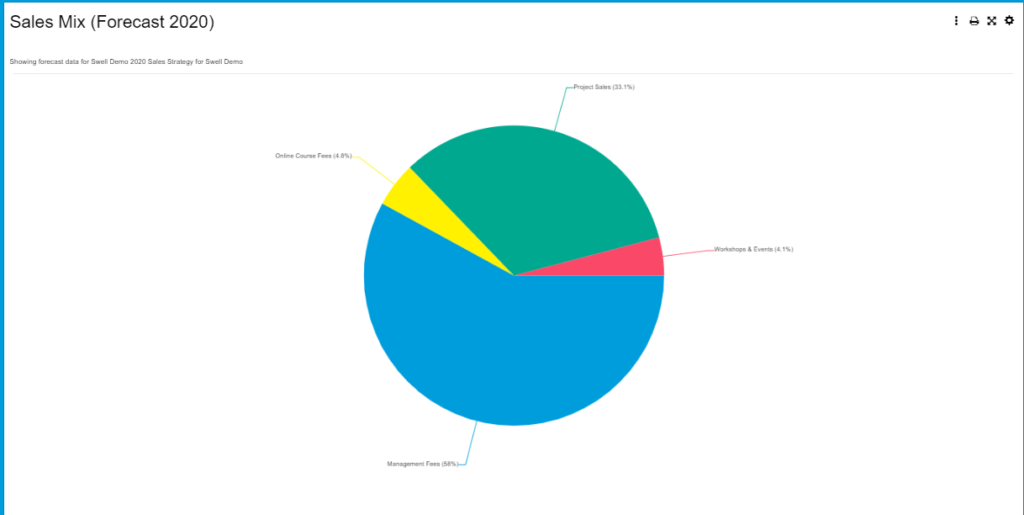Use your numbers to build a business plan.
So far in working through our case-study we have
- Unpacked a profit and loss
- Looked at two of the main expenses for businesses
- Worked out which products are most profitable and where we should focus our sales strategy
In this article we put the strategy together.
You might remember in our last article the business decided that it needed to.
1. Increase sales of it’s online course
2. Increase sales of Projects – and maybe increase the price here too.
Before going any further, we took a look at monthly revenue breakdowns to see if there were any patterns of sales behaviour.

This is what we saw
- After each workshop, project sales increase
- The business needs more revenue in January and February and there is no workshop over this time
- July to September are also low revenue months
- Online course fees also typically rise when there is a workshop
Here’s the strategy that we’re thinking will help this business improve their sales and overall profitability
1. Run 2 more workshops to make 6 for the year.
- First we’re going to move the June Workshop to May
- The new workshops will then be in January and July
This should also mean more project income – the business owner estimates that they can close 40k of additional project sales from each of the two new workshops. With 50% in the month of the workshop and the remainder in the month following.
2. There is going to be a bigger focus on selling the online courses
- The business is going to spend some money on a digital marketing campaign.
- They are also going to have a better sales strategy for the courses at the workshops
The business owner and marketing strategist believe that they can increase sales of the course by 20% throughout the year
3. Management Fees are steady but only growing slightly each month – a better sales strategy to convert project clients to retainers after service is going to be developed and this should see management fees grow by 1% each month.
We like to run a visualisation of strategy, it helps us and the business owner see what the future looks like and identify if there are any additional expenses we might need to budget for.
We put together a business forecast taking into account the above strategy.
- The business owner confirmed that they would likely need to employ one additional staff member at 60k pa to deliver the extra project and management services from January 2020,and that they do typically increase salaries by 2.5% each year – so we took this into account.
- We included some additional costs for marketing and of course the extra costs for the 2 extra events.
Lets compare to the metrics we’ve used so far
1. Gross Profit %

You can see that the above strategy is set to increase the Gross Profit % in 2020 across all service types – this is because resources will be better utilised in the business.
2. Wages %

The introduction of more revenue throughout the year means that the business should perform within it’s target of wages to sales even after additional staff are allowed for. This is again due to efficient use of labour resources.
3. Sales Mix


There will be minimal impact on overall sales mix – a slight re-balancing of management fees to project work which is more profitable
4. Revenue by month


It’s simple to see where the revenue growth is coming from – workshops are creating leads and sales for project work. Whilst there is still fluctuations in sales the strategy has been undertaken to create revenue in previously low revenue months.
5. Profit
You can see that forecast profit is substantially better than the previous year. There are more profitable months from a focus on growing sales in specific months and whilst additional staff are required the better utilisation of labour means a substantial upswing in profit before tax, and this is before the option of increasing prices.

Although these amounts are forecasts only, the case-study shows that by using your past business data you can craft a strategy for the future of your business. There is always work to be done to implement the strategy however taking the time to formulate one gives decision makers and key operational staff knowledge of what needs to be done, what projects to put in place and what to execute as a priority.
Visualising the effect that these actions may have on your business can be motivating as well as enlightening, as it helps you to realise what else might be required to see your plan come to fruition, it also helps you to keep track of how you progress as you roll-out your strategy.
It’s important to remember that every action you take in your business eventually effects your financial data – so being aware of the drivers in your business puts you back in control.
Don’t leave your business’ future to chance
- identify some drivers of your business.
- Decide on what your are going to focus on
- Predict how this will look and adjust for new information
- Then do it
This is strategy
If you’d like help with your business future don’t be shy – reach out for a chat.





